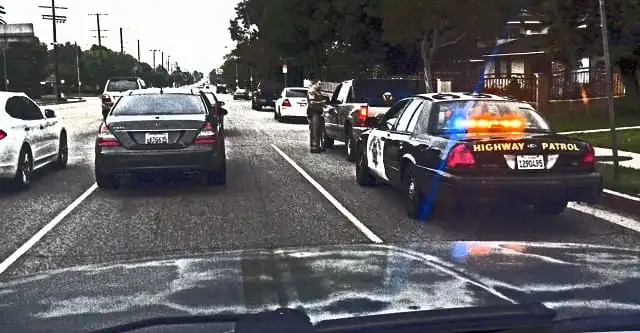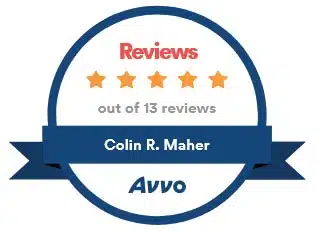
Understanding the BMV Point System in Ohio
In Ohio, the penalties for most traffic violations include points system that the Bureau of Motor Vehicles (BMV) puts on the driver’s record. Racking up 12 points in a two-year period results in a suspension that lasts 6 months. Once that six month BMV license suspension is over, you must completely retest to get your license back and take a full day course at the BMV.
The rules regarding how penalty points are assessed are largely the same for people who drive their own cars and for commercial drivers. CDL holders do face a particular risk from accumulating penalty points, however.
How Many Points are on My License Ohio
Any driver’s license suspension that gets imposed in Ohio applies to each type of license a driver holds. This means that losing your own personal license to a 12-point suspension will also cost you your CDL. While limited driving privileges can be retained while under suspension, no one can operate a commercial vehicle while his or her Ohio-issued CDL is suspended. As a consequence, getting your license suspended often translates into losing one’s job.
How Many Points to Suspend License in Ohio
In Ohio, a 12-point suspension occurs when an individual accumulates 12 or more points on their driving record within a two-year period. Once this threshold is reached, the State of Ohio may suspend the driver’s license. It is important for drivers to be mindful of accumulating points as each traffic violation carries specific point penalties.
How Ohio Assesses Penalty Points
Ohio assesses penalty points on a driver’s license based on various traffic violations or crimes. The accumulation of points is triggered by pleading guilty to or being found guilty of specific offenses.
Ohio BMV Points Chart:
| Traffic Violation | Points |
|---|---|
| Operating a Vehicle While Intoxicated (OVI)/Drunk or Drugged Driving | 6 |
| Hit-Skip/Leave Scene/Hit and Run | 6 |
| Driving With a Suspended or Revoked License | 6 |
| Drag Racing/Street Racing | 6 |
| Fleeing an Accident Scene/Eluding an Officer or Traffic Stop | 6 |
| Vehicular Assault | 6 |
| Driving Without a Vehicle Owner’s Consent | 6 |
| Vehicular Homicide | 6 |
| Reckless Operation/Reckless Driving | 4 |
| Operating a Vehicle After Underage Alcohol Consumption/Underage DUI | 4 |
| Speeding by 30 mph Over Limit | 4 |
| Speeding in a Commercial Vehicle | 4 |
| Running a Stop Sign | 2 |
| Dropping Items on a Highway/Unsecured Load | 2 |
| Disobeying or Interfering With an Officer’s Order | 2 |
| Disregarding a Traffic Light | 2 |
| Railroad Crossing Violation | 2 |
| Disregarding Traffic Signs | 2 |
| Hit-Skip on Private Property | 2 |
| Driving While Not Carrying Your License | 2 |
| Prohibited U-Turn | 2 |
| Speeding | 2 |
| Slow Speed | 2 |
| Following Too Closely | 2 |
| Driving the Wrong Way on a One-Way Street | 2 |
| Driving Left of Center | 2 |
| Crossing a Yellow Line | 2 |
| Failure to Yield to a Pedestrian or Blind Person | 2 |
| Failure to Yield to an Emergency Vehicle or Funeral Procession | 2 |
| Failure to Stay Within Marked Lanes | 2 |
| Failure to Yield Right of Way | 2 |
| Improper Passing | 2 |
| Stopped School Bus Violation | 2 |
| Failing to Maintain Assured Clear Distance | 2 |
| Improper Backing | 2 |
| Driving on a Closed Highway | 2 |
| Failing to Signal a Turn or Lane Change | 2 |
| Failing to Maintain Control | 2 |
| Physical Control (Alcohol-Related) | 2 |
| Driving on a Temporary Permit Without an Adult in the Vehicle | 2 |
| Curfew Violation While on Temporary Permit | 2 |
| Failing to Use Child Restraint | 2 |
How Long Do Points Stay on Your License in Ohio?
How long does it take for points to come off your license in ohio? Points on your driving record in Ohio stay on your license for a period of two years from the date of the violation. It is important to note that the two-year period begins from the date of the violation, and the points will fall off your record after that time.
Each set of points stays on the penalized driver’s Ohio BMV record for two years. The record is public information, like a criminal or arrest record. Insurance companies and employers will be able to access it if they want. Also, penalty points assessed against out-of-state drivers often transfer back to the person’s home state.
Can You Remove Penalty Points From Your Ohio Driving Record?
How to get points off your license in Ohio? There is no sure way to remove points from your driving record in Ohio aside from requesting a court to reopen already resolved cases. The BMV will allow a two point extension on your Ohio driver’s license following successful completion of a state-sanctioned remedial driving course (allowing for 14 points prior to suspension). Drivers can only enroll in such a course once every three years, and only five times over their lifetime.
How Can You Appeal a 12-Point License Suspension?
Drivers can work with a Columbus, Ohio traffic violations lawyer to appeal a points suspension within a short period of time after notice of the suspension is sent from the BMV. It is very important to have your current address on file with the BMV so you can receive notice of potential suspensions.
Waiting Period for Reinstatement
In Ohio, the mandatory waiting period before you can apply for license reinstatement after a suspension is typically six months. However, this duration can vary depending on the severity of the offense that led to the suspension and your driving record.
For first-time offenses involving minor traffic violations or accumulation of demerit points, the suspension period is usually six months. However, for more serious offenses, such as driving under the influence (DUI), reckless driving, or leaving the scene of an accident, the suspension period can be extended to one year or more.
Factors that can extend the waiting period include:
- Multiple traffic violations or suspensions on your record
- Severity of the offense (e.g., DUI with high blood alcohol content)
- Involvement in an accident resulting in injury or property damage
On the other hand, the waiting period may be shortened if you maintain a clean driving record during the suspension and demonstrate responsible behavior. In some cases, you may be eligible for a restricted or hardship license, allowing you to drive for specific purposes, such as work or medical appointments.
It’s crucial to comply with the suspension period and not drive during that time, as doing so can result in additional penalties and extend the suspension further.
Reinstatement Application and Fees
Applying for license reinstatement in Ohio requires submitting a reinstatement application and paying the associated fees. The process typically involves the following steps:
-
Obtain the Reinstatement Application: You can get the application form from your local Deputy Registrar’s office or download it from the Ohio Bureau of Motor Vehicles (BMV) website.
-
Complete the Application: Fill out the reinstatement application form accurately and completely. You’ll need to provide personal information, such as your name, address, and driver’s license number.
-
Gather Required Documentation: Depending on the reason for your suspension, you may need to provide additional documentation. This could include proof of insurance, court documents, or other relevant paperwork.
-
Pay the Reinstatement Fees: The BMV charges a fee for reinstating your driver’s license. The fee amount varies based on the suspension reason and duration. You’ll need to pay the fee when submitting your application.
-
Submit the Application and Fees: Once you’ve completed the application and gathered the necessary documentation, submit them to your local Deputy Registrar’s office or the BMV headquarters, along with the required fees.
The reinstatement fees in Ohio can range from $40 to $650, depending on the type of suspension and any additional fees or penalties. It’s crucial to check the current fee schedule with the BMV to ensure you have the correct amount. Failure to pay the full amount can delay the reinstatement process.
Adult Remedial Driving Course
One of the key requirements for reinstating a suspended driver’s license in Ohio is completing an adult remedial driving course. This course is designed to educate drivers on safe driving practices, traffic laws, and responsible behavior behind the wheel. The primary purpose of the course is to promote safer roads and reduce the likelihood of future traffic violations or incidents.
The adult remedial driving course is an eight-hour program that covers a range of topics, including defensive driving techniques, hazard recognition, and the consequences of impaired or distracted driving. The course also addresses the legal and financial implications of traffic violations and emphasizes the importance of following traffic laws and regulations.
To ensure quality and consistency, the Ohio Bureau of Motor Vehicles (BMV) approves and regulates the providers of adult remedial driving courses. These providers must meet specific criteria and follow a standardized curriculum to obtain and maintain their approval. Approved providers may offer the course in various formats, such as classroom-based instruction, online courses, or a combination of both.
To successfully complete the adult remedial driving course, participants must attend and actively participate in all eight hours of instruction. Additionally, they may be required to pass a written or practical examination to demonstrate their understanding of the course material. Upon successful completion, participants will receive a certificate or other documentation that must be presented to the BMV as part of the license reinstatement process.
It’s important to note that the adult remedial driving course is a mandatory requirement for license reinstatement after certain types of suspensions, such as those resulting from excessive points, driving under the influence (DUI), or other serious traffic violations. Failure to complete the course or provide the necessary documentation may delay or prevent the reinstatement of your driving privileges.
Obtaining SR-22 Insurance
An SR-22 is a certificate of financial responsibility required by the state of Ohio for high-risk drivers, including those whose licenses have been suspended. This certificate proves that you have purchased the minimum liability insurance coverage mandated by the state.
After a license suspension, you must obtain an SR-22 from your insurance provider and maintain it for three years. The SR-22 serves as proof that you have adequate insurance coverage, which is necessary to regain and keep your driving privileges.
To obtain an SR-22, you’ll need to contact your insurance company and request that they file the certificate with the Ohio Bureau of Motor Vehicles (BMV) on your behalf. Some insurers may charge an annual fee, typically ranging from $15 to $50, for processing and maintaining the SR-22 certification.
If you don’t currently have insurance or your provider doesn’t offer SR-22 filings, you’ll need to shop around for an insurer that provides this service. It’s essential to be upfront about your driving record and the need for an SR-22 when obtaining quotes, as this can impact your premium rates.
Failure to maintain the SR-22 certification during the required three-year period can result in the suspension of your driving privileges once again. Therefore, it’s crucial to stay on top of your insurance payments and renew your policy on time to avoid any lapses in coverage.
Retaking the Written Driver’s Exam
After serving your suspension period and fulfilling the other reinstatement requirements, you’ll need to retake the written knowledge test for your Ohio driver’s license. This exam assesses your understanding of traffic laws, road signs, and safe driving practices.
What to Expect on the Exam
The written test consists of multiple-choice questions covering various topics, including:
- Traffic signs and signals
- Right-of-way rules
- Safe driving practices
- Sharing the road with other vehicles and pedestrians
- Ohio-specific traffic laws and regulations
It’s essential to study and prepare thoroughly for the exam to increase your chances of passing on the first attempt.
Study Materials
The Ohio Bureau of Motor Vehicles (BMV) provides several resources to help you prepare for the written test:
- The Ohio Driver’s Manual (available online or at BMV locations)
- Practice tests and study guides
- Online tutorials and interactive learning tools
Familiarizing yourself with these materials can help reinforce your knowledge and identify areas where you need further study.
Scheduling the Exam
You can schedule your written test appointment online through the Ohio BMV website or by visiting your local BMV office. Be sure to bring the required documentation, such as proof of identity, Social Security number, and any applicable fees.
Testing Locations
Written tests are administered at various BMV locations throughout Ohio. When scheduling your appointment, you’ll have the option to choose a testing location convenient for you. Some locations may have longer wait times or limited availability, so it’s advisable to plan ahead and schedule your test well in advance.
Expired License During Suspension
If your Ohio driver’s license expires during the suspension period, you will face additional requirements and fees to reinstate it. When your license is suspended, the expiration date essentially freezes, and the remaining time on your license resumes once the suspension is lifted. However, if the expiration date passes during the suspension, you must fulfill the standard renewal requirements in addition to the reinstatement process.
Typically, you will need to pay a license renewal fee on top of the reinstatement fee. The renewal fee for a standard driver’s license in Ohio is currently $27. You may also need to retake certain tests, such as the vision screening and the knowledge test, depending on the specifics of your case.
It’s crucial to carefully review the expiration date on your suspended license and plan accordingly. If your license is set to expire during the suspension period, you should initiate the renewal process well in advance to avoid any additional delays or complications when seeking reinstatement.
Failing to renew an expired license before attempting reinstatement can result in further penalties and delays. It’s recommended to consult with the Ohio Bureau of Motor Vehicles (BMV) or seek legal guidance to ensure you fulfill all necessary requirements and avoid any potential setbacks in the reinstatement process.
Maintaining a Valid License
Regaining your driving privileges after a suspension is a significant accomplishment, but it’s crucial to take steps to maintain a valid license and avoid future suspensions. Driving is a privilege, and responsible behavior on the road is essential for your safety and the safety of others.
One of the most important aspects of maintaining a valid license is following traffic laws and regulations. This includes obeying speed limits, using turn signals, yielding to pedestrians, and avoiding distracted driving practices like texting or using your phone while behind the wheel. Traffic violations can result in fines, points on your license, and even suspension or revocation if they accumulate.
It’s also essential to renew your license on time. In Ohio, driver’s licenses expire every four years, and failing to renew can result in additional fees and penalties. Mark your calendar or set reminders to ensure you don’t miss the renewal deadline.
If you find yourself in a situation where your license is at risk of suspension again, it’s crucial to address the issue promptly. Ignoring a suspension order or continuing to drive with a suspended license can lead to more severe consequences, including fines, jail time, and an extended suspension period.
By following traffic laws, renewing your license on time, and addressing any potential issues promptly, you can maintain a valid license and avoid the hassle and consequences of another suspension. Responsible driving not only protects you but also ensures the safety of others on the road.
Resources and Support
There are various organizations and resources available to assist you throughout the process of reinstating your suspended driver’s license in Ohio. These can provide guidance, legal aid, and alternative transportation options during the suspension period.
Legal Aid Organizations: Several legal aid societies and non-profit organizations offer free or low-cost legal assistance to individuals facing license suspension issues. These organizations can help you understand your rights, navigate the legal process, and potentially represent you in court if necessary.
Transportation Alternatives: While your license is suspended, you may need to explore alternative transportation options to maintain your mobility. Public transportation services, ridesharing apps, or carpooling arrangements can help you get to work, school, or other important destinations during the suspension period.
Driving Schools: Accredited driving schools in Ohio offer adult remedial driving courses that are mandatory for license reinstatement. These courses aim to improve your driving knowledge and skills, ensuring you are better prepared to regain your driving privileges.
Support Groups: There are various support groups and forums available for individuals facing license suspension challenges. These platforms provide a sense of community, allowing you to connect with others in similar situations, share experiences, and receive emotional support during this difficult time.
State and Local Resources: The Ohio Bureau of Motor Vehicles (BMV) and local government agencies may offer additional resources or programs to assist with license reinstatement. Regularly checking their websites or contacting them directly can provide you with the most up-to-date information and available assistance.
Remember, seeking help from reputable organizations and utilizing available resources can make the process of reinstating your suspended driver’s license smoother and more manageable.
Frequently Asked Questions
How long does a license suspension typically last in Ohio?
License suspension periods in Ohio can vary depending on the offense, but they generally range from a few months to several years. Common suspension lengths include 6 months for a first-time OVI (Operating a Vehicle Impaired) offense, 1 year for a second OVI offense within 10 years, and indefinite suspension for a third OVI offense within 10 years or for certain felony offenses involving a vehicle.
What if I need to drive during my suspension period?
Driving during a license suspension is illegal in Ohio and can result in additional penalties, including extended suspension periods, fines, and even jail time. If you have a legitimate need for transportation, you may be eligible for limited driving privileges or a restricted license in certain circumstances, but you must apply for and meet specific requirements.
Can I reinstate my license early or get the suspension period reduced?
In most cases, you cannot reinstate your license early or get the suspension period reduced. However, there are a few exceptions where you may be able to request a modification or termination of the suspension, such as if you can demonstrate significant hardship or if you successfully complete a remedial driving program.
What happens if I don’t reinstate my license after the suspension period ends?
If you don’t take the necessary steps to reinstate your license after the suspension period ends, your license will remain in a suspended status, and you will be subject to penalties for driving without a valid license. It’s important to follow the reinstatement process promptly to avoid additional consequences.
Can I reinstate my license if I have outstanding tickets or unpaid fines?
In most cases, you will need to resolve any outstanding tickets, fines, or other legal obligations related to your suspension before you can reinstate your license. The BMV (Bureau of Motor Vehicles) may require proof of payment or clearance from the court before processing your reinstatement application.
What Is Required to Reinstate a Suspended Ohio Driver’s License?
Drivers who lose their license to a 12-point suspension must apply to the BMV for reinstatement by paying an extra fee, taking a remedial driving course, obtaining a proof of SR-22 insurance establishng full insurance coverage for the following 3 years, and retaking the complete licensing exam. Having a CDL reinstated can also require passing the full battery of tests and repaying the testing fees.
The best way to avoid a 12-point license suspension is to keep points off your license from the beginning. Contest every ticket as though your license depends on it.
To discuss options for challenging a traffic ticket for speeding, driving under suspension, or even drunk driving, call The Maher Law Firm at (614) 205-2208. You can also reach out to a Columbus, OH, traffic violations lawyer by filling out this contact form.
RECENT POSTS
-
What is Improperly Handling Firearms in a Motor Vehicle in Ohio?
07 Mar 2025
-
What is the Difference Between OVI and DUI in Ohio?
05 Mar 2025
-
What Happens When You File a Police Report on Someone For Harassment
11 Dec 2024
-
How to Move for Dismissal for OVI in Ohio
28 Oct 2024
-
Ohio Fraud Laws: Fraud Charges and Their Penalties in Ohio
12 Sep 2024
-
Can Dismissed OVI Be Expunged in Ohio?
02 Sep 2024
BLOG CATEGORIES
-
Traffic
126 Posts
-
Weapons
3 Posts
-
Drugs
22 Posts
-
DUI
195 Posts
-
Current Events
1 Posts
-
Expungements
2 Posts
-
News
18 Posts
-
Criminal Defense
45 Posts


